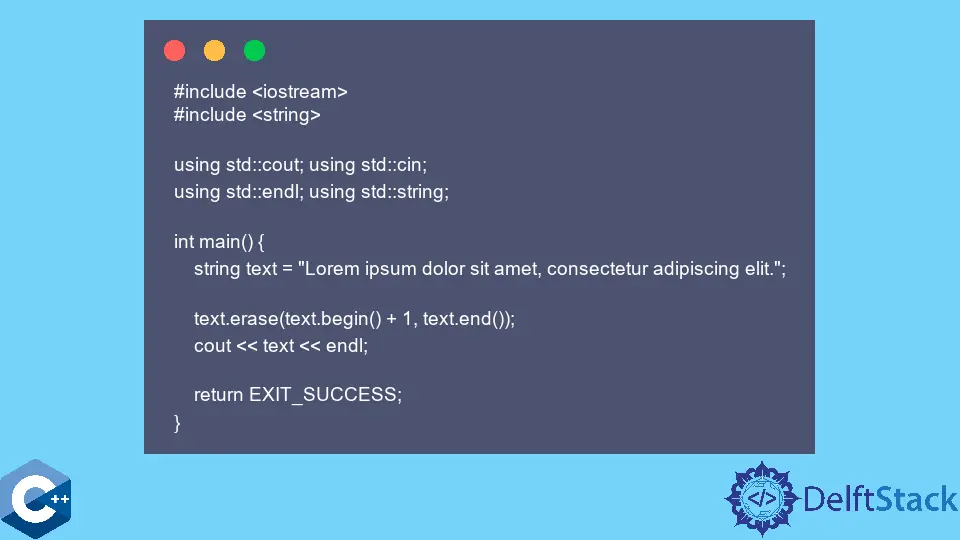C++ 中的 std::string::erase 函数

本文将演示如何在 C++ 中使用 std::string::erase 函数从字符串中删除字符。
使用 std::string::erase 函数删除字符串中的指定字符
erase 是一个 std::string 成员函数,可用于从字符串中删除给定的字符。它有三个重载,我们将在下面的例子中讨论每一个。
第一个重载接受两个 size_type 类型的参数,分别表示 index 和 count。此版本将尝试擦除从 index 位置开始的 count 个字符,但在某些情况下,给定索引后剩余的字符可能更少,因此该函数被称为删除 min(count, size() - index) 字符。erase 的第一个重载返回 *this 值。
这两个参数都有默认值,当我们将单个参数值传递给函数时,结果可能有点违反直觉。事实上,给定的值被解释为 index 参数,而 count 被假定为 std::npos。因此,这会导致在给定位置之后擦除字符串的其余部分。
下面的代码片段显示了类似的场景 - 一个使用 find 成员函数,另一个 - 通过显式传递索引值。
#include <iostream>
#include <string>
using std::cin;
using std::cout;
using std::endl;
using std::string;
int main() {
string text = "Lorem ipsum dolor sit amet, consectetur adipiscing elit.";
text.erase(0, 6);
cout << text << endl;
text.erase(text.find('c'));
cout << text << endl;
text.erase(2);
cout << text << endl;
return EXIT_SUCCESS;
}
输出:
ipsum dolor sit amet, consectetur adipiscing elit.
ipsum dolor sit amet,
ip
该函数的第二个重载接受表示要擦除的字符位置的单个参数。这个参数应该是对应的迭代器类型;否则,它将调用第一个重载。我们可以将这个版本的函数与 std::find 算法结合使用,从字符串中删除给定字符的第一次出现。否则,我们可以使用 begin 或 end 迭代器传递字符的相对位置。
#include <iostream>
#include <string>
using std::cin;
using std::cout;
using std::endl;
using std::string;
int main() {
string text = "Lorem ipsum dolor sit amet, consectetur adipiscing elit.";
text.erase(std::find(text.begin(), text.end(), ','));
cout << text << endl;
text.erase(text.end() - 5);
cout << text << endl;
return EXIT_SUCCESS;
}
输出:
Lorem ipsum dolor sit amet consectetur adipiscing elit.
Lorem ipsum dolor sit amet consectetur adipiscing lit.
最后,我们有第三个重载,它接受两个迭代器作为参数并删除相应范围内的所有字符。以下代码示例展示了如何删除字符串中除初始字符以外的所有字符。
#include <iostream>
#include <string>
using std::cin;
using std::cout;
using std::endl;
using std::string;
int main() {
string text = "Lorem ipsum dolor sit amet, consectetur adipiscing elit.";
text.erase(text.begin() + 1, text.end());
cout << text << endl;
return EXIT_SUCCESS;
}
输出:
L
Founder of DelftStack.com. Jinku has worked in the robotics and automotive industries for over 8 years. He sharpened his coding skills when he needed to do the automatic testing, data collection from remote servers and report creation from the endurance test. He is from an electrical/electronics engineering background but has expanded his interest to embedded electronics, embedded programming and front-/back-end programming.
LinkedIn